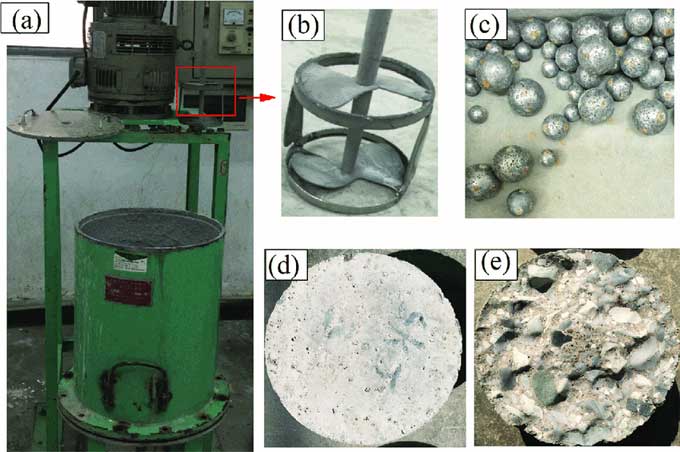
Testing Concrete for Abrasion Resistance in the Construction Site

Abrasion resistance requires many structures, including dams, canals, industrial floors, and roads. The surfaces of concrete pavements and floors are highly abrasion-resistant. Concrete strength is strongly dependent on aggregates, so strength has a decisive influence on abrasion resistance. Abrasion resistance of concrete is an important indicator of its serviceability for use as road pavement, industrial floors, dams, etc.
This standard test determines the relative resistance of concrete surfaces by measuring the abrasion loss of a specimen exposed to an abrasive charge. In addition to concrete pavements, industrial floors, railway platforms, dockyards, and walkways, this test method measures the abrasion caused by physical impacts.
Workflow of the Test
The concrete cubes impinge with an abrasive charge. The concrete abrasion loss refers to the loss of mass of the cubes that occurs as the concrete surface of the cubes abrades.
Apparatus for the Test
- Scale.
- Conical Galvanized Iron Hopper.
- Pneumatic Sand Blasting Cabinet.
Conditions of Test operating
During operation, there is a pressure of 0.14 N/mm2 for the abrasive charge. By using air pressure and sand to rub concrete surfaces, you can create an abrasive charge. Each impingement shall require 4000 grams of charge. An abrasion loss defines as the mass lost due to two impressions on the same face of a concrete cube.
Test Specimen?s Preparation
It's necessary to oven-dry concrete cube specimens measuring 10 cm cubes for 24 hours at 50?C after they have been cured for 28 days. After emery paper has rubbed over the specimen's surface, the aggregate grains should expose as well as cement laitance.
How to Conduct a Test
Procedure
- On the specimen carrier, the dry, weighted specimen should place with the surface to examine facing the tip of the needle. Contact with the mold was limited to the smooth vertical surfaces of the cube.
- The nozzle tip should situate 2.5 cm away from the edge of the cube, in the middle of the half side.
- A full charge of 4000 grams of sand should then be blasted on the specimen surface.
- Using the handle provided, the cradle shall be slowly moved between the two fixed points.
- On the same surface, the sample should rotate 180 degrees in the horizontal direction in order to make two imprints on it.
- For one surface of the sample, the sample must be removed, cleaned, and weighed after the test to determine the loss of mass in grams.
- On the remaining three vertical surfaces of the same specimen, repeat the same procedure.
Calculation
This is the formula to calculate the mass loss per surface of the specimen:
M= M1 +M2
M is for mass loss in grams & M1 is for the specimen?s mass before each test & M2 is for the specimen?s mass after each test.
Wrapping it Up
Abrasion resistance of concrete is one of the measures of its durability. The concrete surface deteriorates due to abrasion by sliding, scraping, percussion, or action of abrasive materials carried by water.
To learn more, watch the following video tutorial.
Video Source: Engr. MJ Fazli
Due to an increase in vehicle traffic and changing environmental conditions, concrete surfaces will damage. Routine maintenance and repairs on its pavements and floors need to maximize its serviceability.
Abrasion shortens the service life of the concrete. Studies show that this is a promising future. Abrasion properties change with aggregate type, compressive strength, cement content and curing and show dramatic changes when silica fumes, fly ash, fibers, and latex add to concrete.
Both the type of loading and the age of the concrete play a significant role in determining abrasion. So the research concludes by exploring how abrasion resistance property varies with mix design, concrete density, and concrete age.

Image Courtesy: researchgate.net

